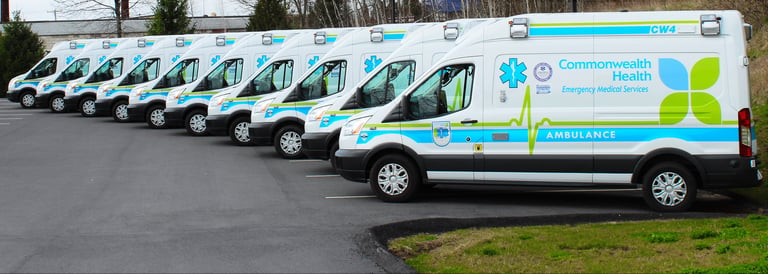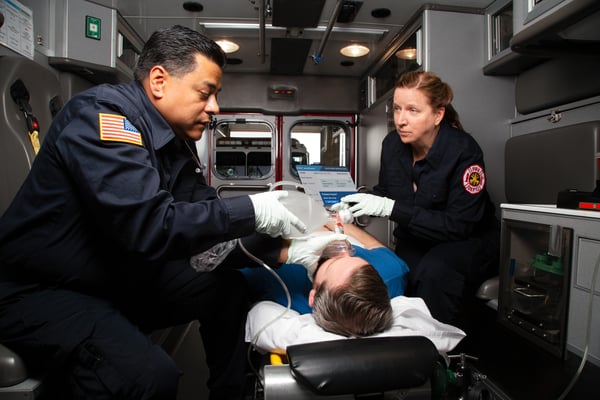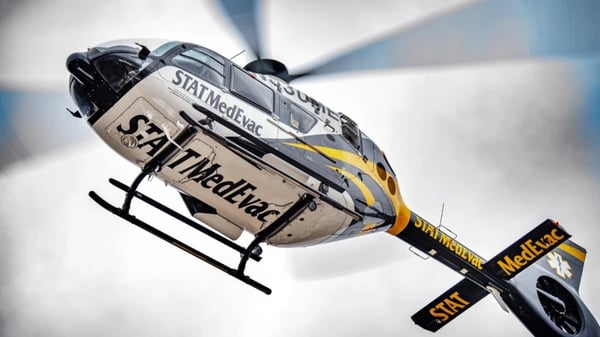News Alert: New ePCR Integration Simplifies EMS Data Management and Enables Better Care Coordination
How Can New Technology Guarantee Patient Care Comes First?
Being a large private EMS company doesn’t come easy these days
Was this information valuable?

Being a large private EMS company doesn’t come easy these days. The days are long for clinicians, the incidents are becoming more stressful and the paperwork process can be monotonous. As a growing company (Commonwealth Health EMS), we have come to realize that there has to be an easier way to be efficient. Being efficient in this field is a tough sell to employees and patients. There are times when we have to take extra steps to ensure that we are doing the right thing in all aspects. Patient care always comes first, but you always have to keep the business aspect in the back of your mind.

Sometimes, we find comfort in cutting corners because it seems that it might be the easier path to completion.
Ever since I can remember, we have operated on antiquated systems that caused more frustration than help. Sometimes, we find comfort in cutting corners because it seems that it might be the easier path to completion. Though it seems easier, it will only equal more work in the long run. I started in this field back in 2002; at that time, I thought some of the software that we were using was cutting-edge technology. Was I wrong! I’m the type of clinician that needs to document if the patient moves an extremity the wrong way, because I was taught that if it wasn’t documented, it didn’t occur. There were times that I would type 2,000-word narratives on incidents, as more of a security blanket for me to know that I did the right thing. The narratives weren’t even the most painful part of the charting process; the drop-down boxes were just obnoxious and took forever to complete. An average chart took about 35 minutes to calm my obsessive compulsive disorder (OCD) tendencies. For 15 years, I kept saying “there has to be an easier way.”
Benefits of Integrated Dispatch & ePCR Software
Fast forward to 2014, I was given an opportunity to be the operations manager at Commonwealth Health EMS, where we field approximately 70,000 requests for transport per year in Pennsylvania. This new position enabled me to give more input on some of these painful processes that we endure everyday as emergency clinicians. None of our systems integrated properly, which also created longer processes and resulted in us paying more in FTEs to operate older software. We started to look into different products that would be full integration for our system. We explored two main companies that could offer the type of integration that we were looking to establish. There was about two years’ worth of ground work that went into the decision process that would affect more than 300 employees.

At that time, there wasn’t much in the market besides ZOLL – or at least anyone that had the capabilities to service our organization in a way to advance us to the next level. ZOLL’s suite of products showed efficiency from the demo of the product to current day. A system can only operate as good as its capabilities; we didn’t have those capabilities at first, but we are now moving forward to better ourselves as an organization and increase efficiency across the board.
We started off by deploying RescueNet CAD to replace our antiquated system that had been crashing every other day. When you operate a large organization, you need to be consistent and dependable. The ZOLL product was an adjustment to say the least, because our previous software was so simple and only provided simple data. But to me, it was a huge win and a large step toward our goal of integration. The addition of the ZOLL CAD enabled our organization to succeed in areas where we have struggled to achieve success. We’ve been operating on the CAD system for close to one year now, and it has changed our organization drastically. You will never know how broken your system is until you make a positive change. Along with the CAD, we integrated radio operations into our computer system. The setup is similar to radio operations in a public service answering point (PSAP).
Step two in our integration process is currently underway and will be deployed this month. We decided that our charting software was no longer able to fit our needs. Our employees strive to have the best documentation, which can take large amounts of time when done correctly. As we all know, time is one of the most important factors in efficiency. Our vision was to cut those charting times by at least 50 percent and get our crews cleared up faster to handle more incidents. More efficient charting will decrease overall stress for crew members, allow our system to handle more incidents and allow for prompt billing processes. We have also noted that in the early stages of training of RescueNet ePCR that the charting is cleaner and more customizable. As the rules and standards change in the future for reimbursement, this type of program and customization will help our organization adapt in a timely manner to ensure compliance.
The Future of EMS is Bright
We continue to learn as we move forward into the future of EMS. The future is bright to say the least, and with a little agility we can keep EMS as a successful and enjoyable career path. Success is not easily obtained but with perseverance and continuous improvement it is within the reach of anyone with the vision of our common goal: excellent patient care.
Related Posts
4 Must-have Data Points for Dispatch-Billing Alignment and Maximum Reimbursement
How STAT MedEvac Connected Device, Software, and Data Technology To Enhance QA and Elevate Care
ZOLL Pulse Blog
Subscribe to our blog and receive quality content that makes your job as an EMS & fire, hospital, or AR professional easier.
ZOLL Pulse Blog
Subscribe to our blog and receive quality content that makes your job as an EMS, fire, hospital, or AR professional easier.




